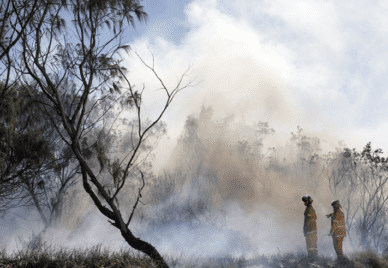
Aggregating and Integrating Data on Health Outcomes Associated with Bushfires at a National Scale
Exploreabout Aggregating and Integrating Data on Health Outcomes Associated with Bushfires at a National Scale
A dispersed and unconnected network of diagnostics, analytics and intelligence hampers Australia’s current biosecurity modelling capability.
Together with our partners, we built the world’s first virtual lab for biosecurity research and decision-making. Biosecurity Commons empower researchers and decision-makers to produce consistent and transparent models and analytics without coding experience or high-end IT equipment.
The project improves access to computing resources, IT expertise, and addresses issues such as intellectual property and licensing concerns, and silos between jurisdictions and sectors.
This removes barriers in the existing framework where biosecurity models are often inaccessible and frequently developed for a single purpose, based on a single pest or disease, and are rarely reused or shared.
Biosecurity Commons has tools that support planning and preparation to ensure timely and effective responses to biosecurity events, and allows researchers and decision-makers to investigate a wide range of questions related to biosecurity risk and response.
The platform lets jurisdictions to share analytics and modelling to demonstrate that the right decisions are being made; and to improve modelling research by working collaboratively.
Biosecurity Commons leverages the EcoCommons platform architecture and components, which offers a suite of common approaches for building analytical modelling outputs, as well as integrating a vast array of geospatial data.
The project built a permissioned online environment for working securely, which will promote collaboration across state jurisdictions and disciplines of biosecurity.
Authorised users can access and analyse restricted data securely; all users can upload their own data to use privately, share with collaborators, or share globally from within the platform.
Five biosecurity analysis workflows each address a specific biosecurity question:
An expert panel consisting of biosecurity scientists and key users informed workflow development.
To empower and build capacity in the biosecurity community, video and face-to-face training material were developed. This will transform the status quo, particularly for government users, of running analyses on excel spreadsheets and agency-specific models into automated user-friendly workflows in the Biosecurity Commons.
Access Biosecurity Commons, launched in May 2023. Read the launch announcement.
For the first time, researchers, government and practitioners across organisations can securely share biosecurity data and reproducible models and analytics. This will build trust, transparency and confidence in model outputs, and accelerate research through the reuse and repurposing of existing models.
Researchers and decision makers in the government, university, environment and agriculture sectors benefit from the project’s core features: